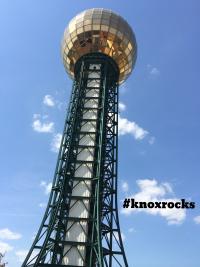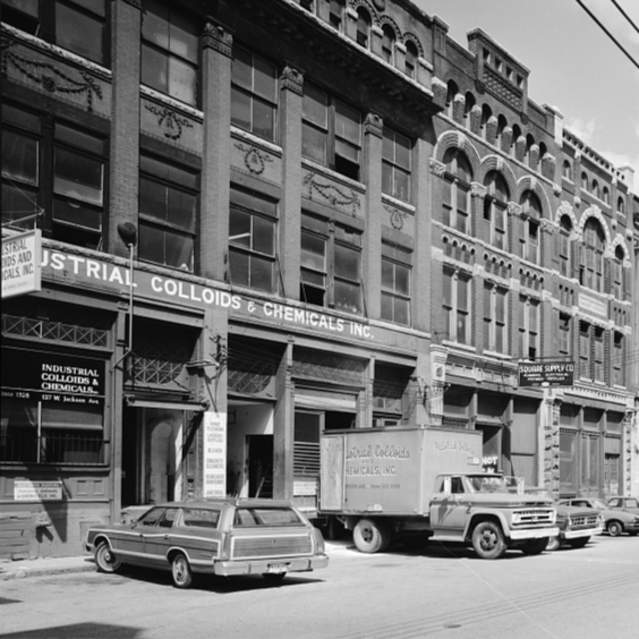Believe it or KNOX
Interesting facts about Knoxville which may surprise you. Believe it...or Knox!
Historical content provided by: Jack Neely, Executive Director of The Knoxville History Project
Summit Hill
Summit Hill Drive is named for Summit Hill, the highest elevation downtown, which is partly traverses. Summit Hill was originally known as Gallows Hill! Before the Civil War, it was a location for hangings of convicted murderers.
 Jackson Avenue
Jackson Avenue
Jackson Avenue, famous for its Victorian buildings and worn remnants of brick pavement, is one of the newest streets in downtown Knoxville. For many years its development was blocked by the existence of a large sawmill and lumber products business, Burr & Terry, which covered most of the western half of the district now known as the Old City where plenty of shopping, food and entertainment await you! It was completed around 1888--by then, Knoxville’s street grid was almost a century old! Jackson avenue is also the site for the Rhythm n' Blooms festival.
Henley Street
Henley Street is named for David Henley, the federal agent based in Knoxville who, in 1797, discovered that former Governor William Blount was involved in a treasonous plot to make the Louisiana territory a British colony! Today, the Henley Street Bridge leads to Blount County!
BBQ
The Pigburger, a beef and pork delicacy associated with now-defunct barbecue stalwarts Brother Jack’s and Dixson’s, but now difficult to find, was associated almost entirely with Knoxville, and may not have existed elsewhere. Take in some delicious Knoxville barbecue in downtown Knoxville at local places like Sweet P's Downtown Dive, as well as over 37 restaurants all around Knoxville serving an outstanding menu of BBQ to temp your taste buds.
Radio
Founded in 1921 as WNAV, WNOX once claimed to be the sixth oldest radio station in America. The claim is hard to prove, but thanks to Stuart Adcock, who was a teenager when he started broadcasting, Knoxville was an early adapter to radio. Bring your lunch and listen to a live performance radio show, WDVX Blue Plate Special® held 6 days per week at noon inside the Knoxville Visitors Center. Take in the sounds of blues to bluegrass, country to Celtic, folk to funk, rockabilly to hillbilly, local to international, it all part of the amazing live music experience!
 Dogwood
Dogwood
Dogwoods are among the most welcome signs of spring in Knoxville today, and the inspiration for a big annual festival. However, according to arborists, they weren't a common sight in suburban lawns here until the 1920s or '30s! They grew naturally in the countryside, and their wood was used for industrial spindles, but the trees themselves had such crooked limbs and ragged bark they were not considered beautiful enough for planting in residential neighborhoods. View a beautiful display of dogwoods along the Dogwood Arts Trail near Downtown Knoxville and celebrate art, culture and the natural beauty at the Dogwood Arts Festival.
Island Home
The Island Home community is actually not an island! It's named for the fact that it's very near one of Knoxville's best-known islands, Dickinson Island, now location of the Knoxville Downtown Island Airport. It was originally the site of a model farm and retreat of prosperous Knoxville merchant Perez Dickinson, originally from Amherst, Mass., and a cousin of poet Emily Dickinson. Dickinson's second home—where he entertained, but never slept—still stands on what's now the campus of the Tennessee School for the Deaf.
Alex Haley
Alex Haley, author of Roots, moved to Knoxville in the last decade of his life. He's honored with a large statue in Alex Haley Square which was for a few years was the largest statue of an African American in the world. However, he was not the first Knoxvillian who'd written a genealogical saga about the African American experience in the South before the Civil War. That honor belongs to educator Charles W. Cansler, who wrote a book called Three Generations, published in 1939.
Bowling
One of Knoxville's first sports was bowling. Peter R. Knott's Bowling Saloon was familiar on Market Square in the 1850s. Relive history and have fun Bowling again in downtown Knoxville at the extremely popular Maple Hall Bowling.
Courthouse
The big black cannons on the courthouse lawn are made of fiberglass! The originals, Spanish cannons believed to be a gift of Admiral Dewey after the Spanish-American War, defended the courthouse for about 40 years, but were donated to a World War II scrap drive. They were gone for about 50 years, but in the 1990s, Knox County Commission chose to replace them with $8,000 fiberglass replicas. Learn more about Knoxville's history and heritage, and celebrate Knoxville's 225th anniversary!
 Sunsphere
Sunsphere
Installed in early 1982, just in time for the World’s Fair, the Sunsphere’s glass panes are infused with actual gold dust! Take in 360° views of Knoxville from the newly renovated 4th floor Observation Deck which is open free to the public all year long!


